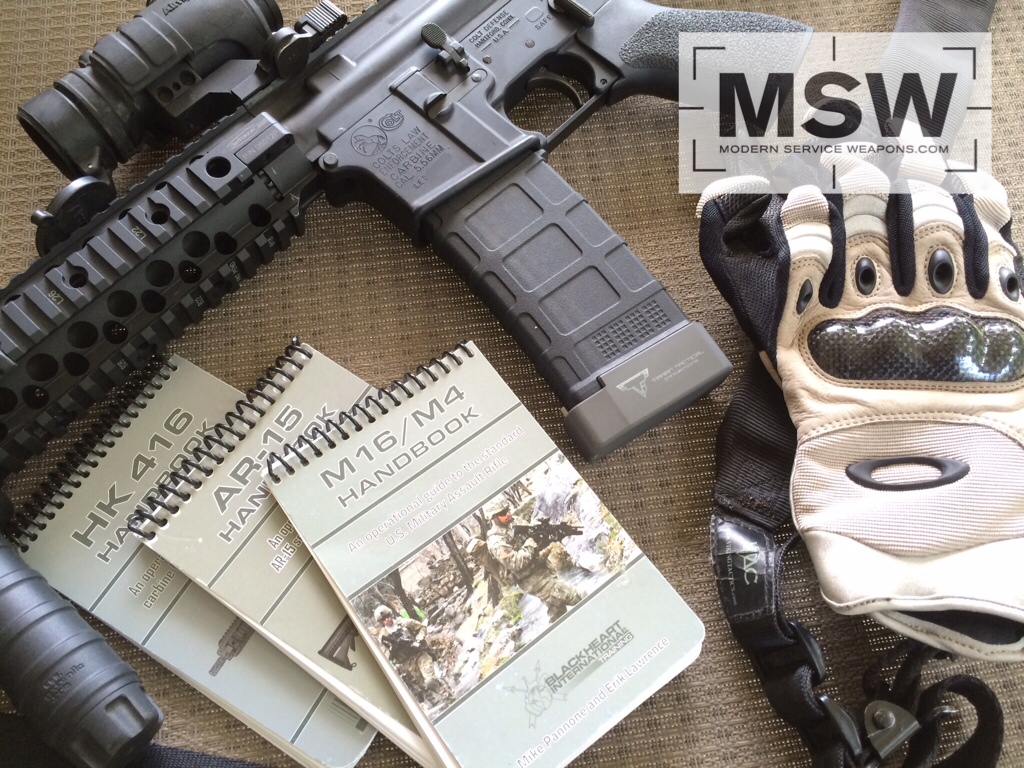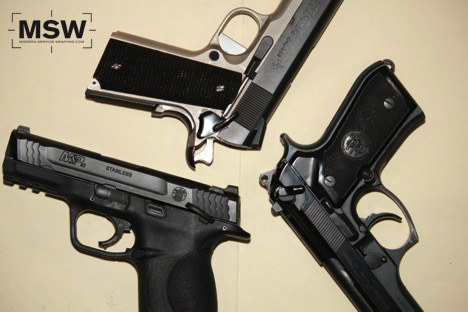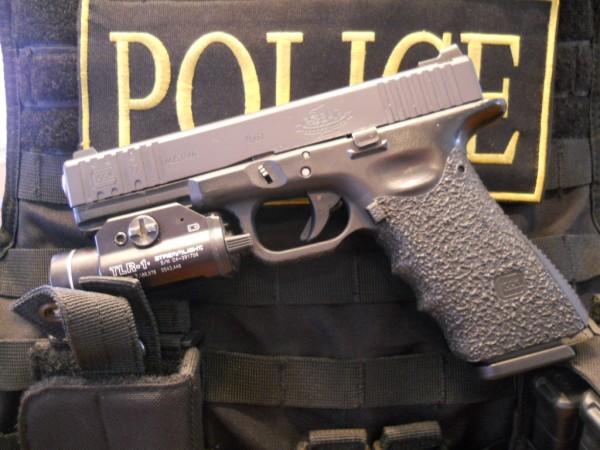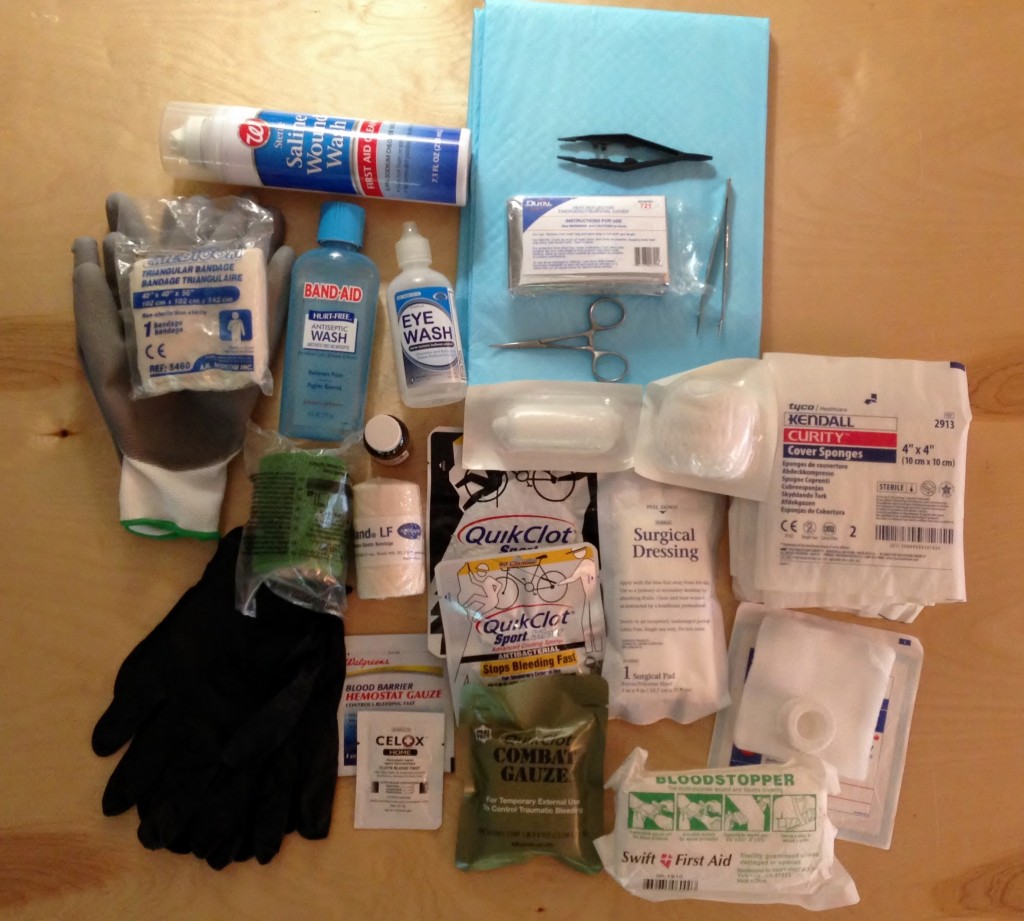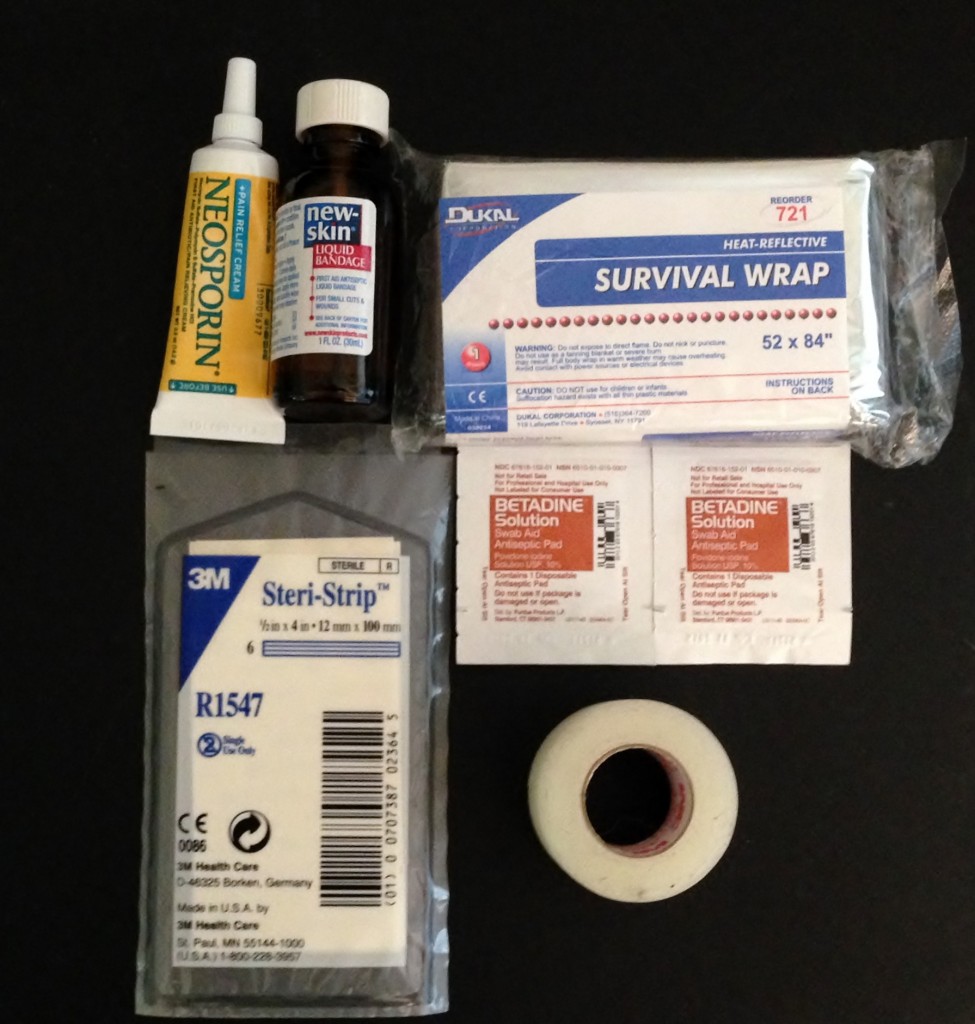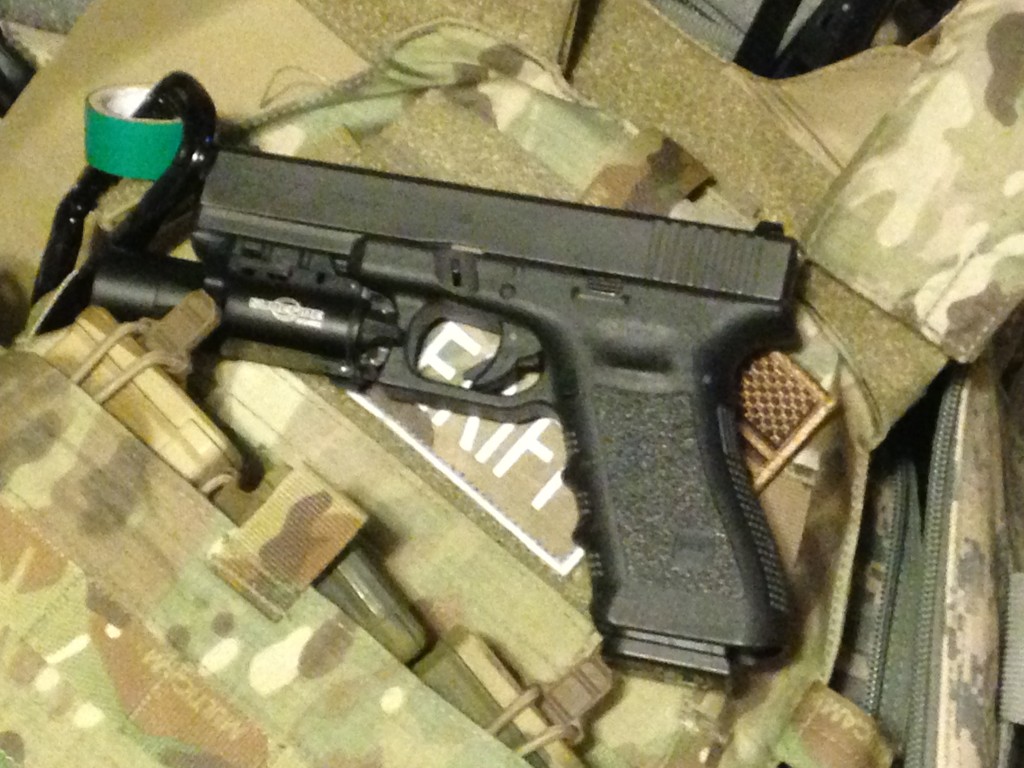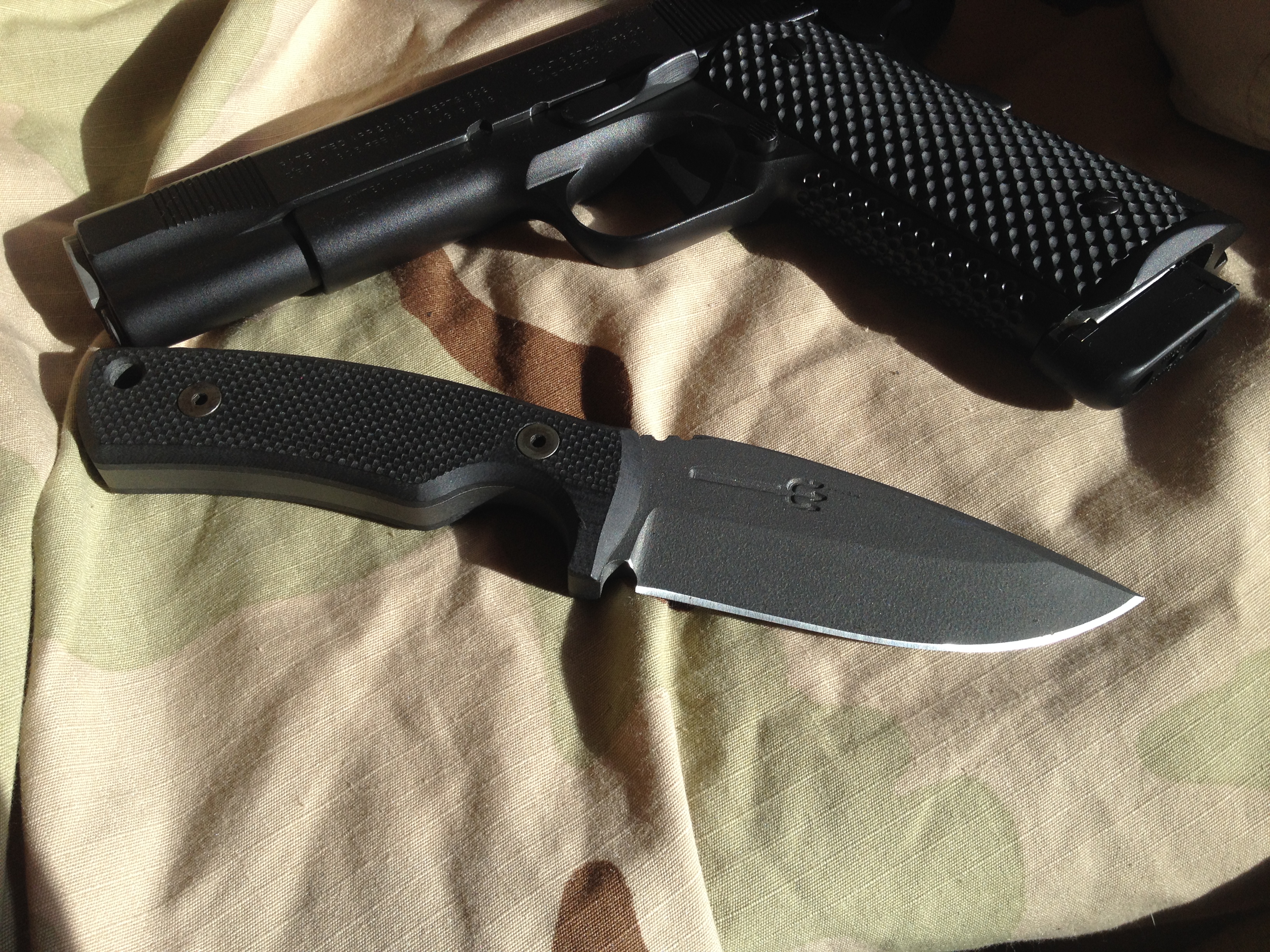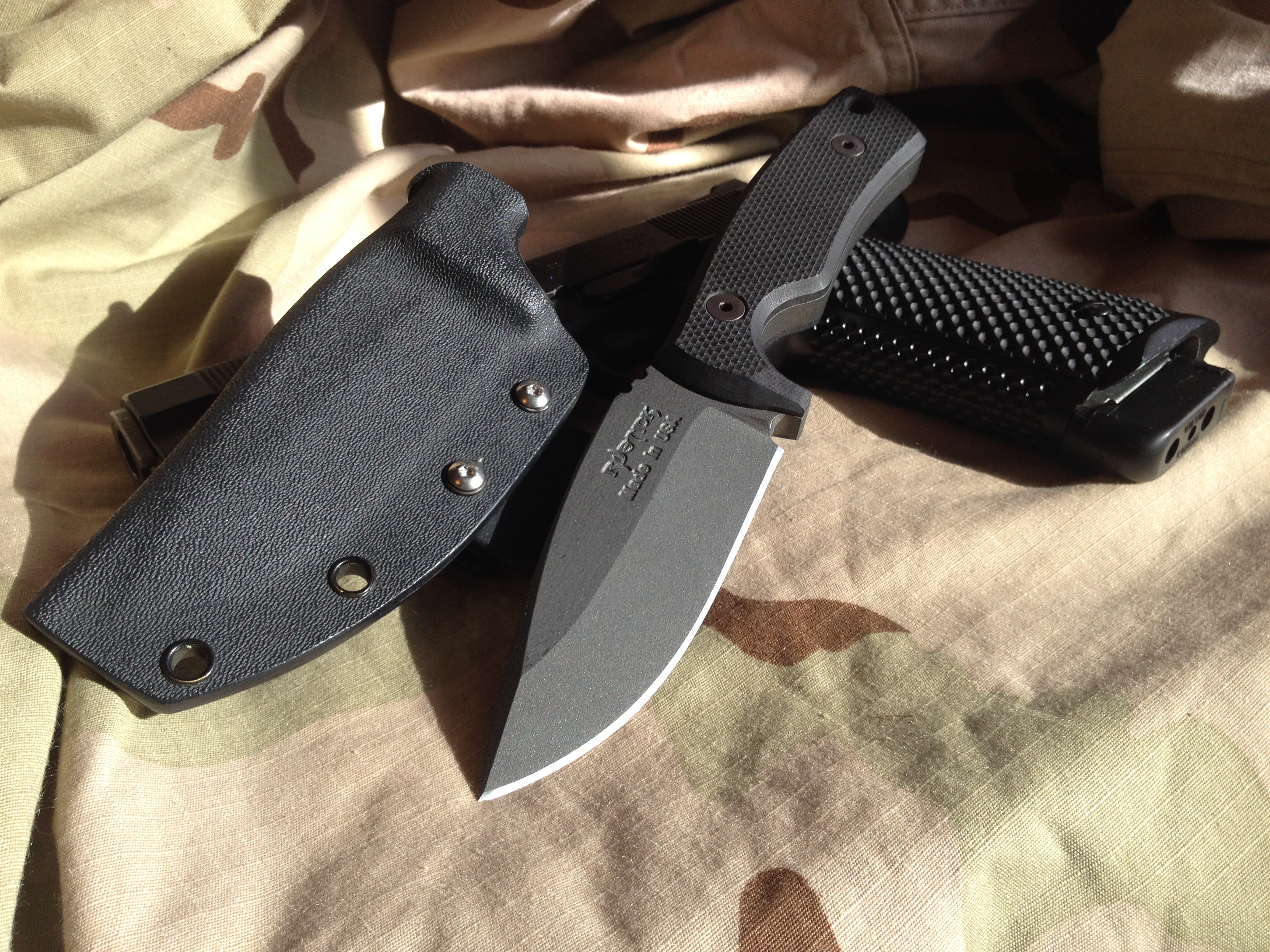In late 2004, FN Herstal won the contract from the United States Special Operations Command for a new, modular, and adaptable rifle system. The FNH entry was called the Special Operations Forces Combat Assault Rifle (SCAR). The new rifle system offering was rumored to be slated for several different calibers, including 6.8 SPC. To date, the FNH SCAR is only available in factory form in 5.56x45mm and 7.62x51mm. The FNH SCAR saw service with the United States Special Operations Command (SOCOM) in the two variants, the SCAR MK16 (5.56), commonly referred to as the SCAR-L for Light, and the MK17 (7.62), commonly referred to as the SCAR-H for Heavy. In 2010, SOCOM announced that it was cancelling the MK16 program. The initial claim was that the MK16 did not do anything better than the current M4 offerings. To my knowledge, a couple of units still field the 5.56 SCAR-L in the 10.5 inch CQC variant. The SCAR family of rifles operate off of a short stroke piston system. The SCAR family of rifles are also completely ambidextrous, a bonus for left handed shooters who often are at the whim of right hand designs. Continue reading
Category Archives: Review
Review: Mike Pannone M16, AR15, and HK 416 Handbooks
I’ve been following Mike Pannone through his writings and videos on the Internet for quite some time now. I enjoy his no-nonsense, performance based approach to training. His drills are challenging and rooted in reality. I particularly like his 15 in 10 Drill, which pushes the limits of speed while keeping a tight accuracy standard. This past SHOT Show, I ran into Mike in one of the hallways and had a nice chat with him. While this was the first time we had met in person, I felt like we were chatting like two old shooting buddies. His real world experience is significant (look it up), but Mike also has a solid grasp of the industry, and therefore understands the pros and cons of each weapon system. Hilton recently attended Mike’s Covert Carry Class and keeps telling me how I have missed out by not yet taking the opportunity to get on the range with Mike. Continue reading
SOLO INTERVENTION OF THE LONE “ACTIVE KILLER” : FANTASY OR REALITY? [PART TWO]
At the end of part one, I suggested a solo intervenor’s mission is driven by two goals: (1) Interrupting, containing, and deactivating the active killer, and; (2) communicating and identifying oneself as the “good guy” so victims, witnesses, and responding LEOs do not mistake an intervenor (you) for the active killer. I didn’t suggest which of the two was more important. That depends on the intervenor’s own analysis of the SHOULD and MUST. I also purposely failed to mention something obvious: Time spent on the second goal delays implementation of the first, thereby diminishing the chance of an earlier, more lives saved intervention. Continue reading
SOLO INTERVENTION OF THE LONE “ACTIVE KILLER” : FANTASY OR REALITY? [PART ONE]
This post started out in draft (many months ago) as a review of the Panteao Productions video by Paul Howe, “Civilian Response To Active Shooters.” (Click on the image to read some of Paul Howe’s background).
 I was a bit uncomfortable some might think I had strayed from my lane as I have no military combat experience, and neither my training nor my life or death experiences resemble Paul Howe’s. Thus, I changed this post to pose and (hopefully) answer the title question. I think a better term to describe the dynamic incidents addressed is “active killer,” so I use that term instead of the universally used term “active shooter.”
I was a bit uncomfortable some might think I had strayed from my lane as I have no military combat experience, and neither my training nor my life or death experiences resemble Paul Howe’s. Thus, I changed this post to pose and (hopefully) answer the title question. I think a better term to describe the dynamic incidents addressed is “active killer,” so I use that term instead of the universally used term “active shooter.”
I know Paul Howe only by reputation, his videos, and the material he and others have posted on the internet about his classes and training facility, CSAT. If I had a training “bucket list,” a week or two at CSAT would be on it. Real operators I know respect him, his abilities, and doctrine. Paul’s video provides basic insight into civilian mindset, gear, and tactics appropriate to intervene in an active killer incident. Obviously, a safer intervention tactic would be simply to have Paul Howe with you and let him do the heavy lifting. You would stay out of the fight, help with the evacuation of innocents, and provide direction to sworn first responders (most importantly, describing the armed and qualified civilian responder who already entered and was in response mode). Unless you are Mrs. Paul Howe, that’s fantasy. Continue reading
Safariland QLS Hits The Two Year Mark- Review
A couple of years ago, I really wanted to get my holster away from my body a bit more, particularly when wearing a heavy winter coat. I found that a lot of times, my front sight would snag on the coat pocket on the way up.
So, I did my research and chose to go with the Safariland Quick Locking System versus a simple stand off. At the time, I didn’t realize how beneficial that would be.
I do not have a take home car due to not living in the county that I work, so I have a 10 minute commute to work each day. When I purchased my new Toyota 4Runner, I noticed that the holster was wearing on the leather. So, I started taking the holster and pistol off when in my own vehicle. Thus it has saved on the wear and tear on the leather. Extra added bonus, to say the least.
Some of my coworkers have been hesitant about the connection systems, but I have had zero problems from it. One of the neat features is that you can have multiple attach points and use the same holster in many functions, IE a belt attachment, a drop leg attachment, etc.
I have found this piece of gear to be very durable. The locking mechanism is as strong two years later, as it was the first day I attached it to this holster. I’ve encountered zero problems with it, and have nothing but praise for the system in the context I use it.
Check it out at www.safariland.com.
Thumb Safeties on Pistols: Thumbs Up or Thumbs Down?
The question is not meant to have a definitive answer. The answer will depend on your own use and experience. I wish only to offer some thoughts on the matter. The arguments on the thumbs down side usually lean towards users not wanting to have any obstacles to overcome when they need to fire in whatever high stress scenario they can imagine. The arguments on the thumbs up side tend to lean towards the user desiring some additional layer of protection from an unauthorized user being able to fire, and either thwarting their attempt completely or merely giving the owner time to react to the attempt. Being that this article is being presented on Modern Service Weapons, my thoughts are geared towards those who use pistols as just that, service weapons. Continue reading
Robar/10-8/MSW/Glock 17 Revisited
With the recent attention and series of articles on modified polymer pistols, I thought revisiting my Robar/10-8/MSW/Glock was in order. As the recent series of evaluations have highlighted, extensive modifications to polymer pistols are usually a want to do, rather than a have to do, decision. Having said that, as I stated in my previous evaluations modifying your pistol to best suit you and to ensure it’s 100% reliability falls squarely into the have to do category. Continue reading
Colt 1911 Dual Recoil Spring Test – Part 2
Some time ago Hilton contacted me to conduct an evaluation on Colt’s new Dual Recoil Spring Assembly for the 1911 pistol. For those of you who haven’t kept up with the various articles on this, Colt developed the dual recoil spring assembly at the request of the Marine Corps for the new M45 1911 Pistol. The reasoning behind the new spring is to extend service life to 8000 rounds between changes.
Review: Paul Liebenberg’s Gunsmithing the 1911
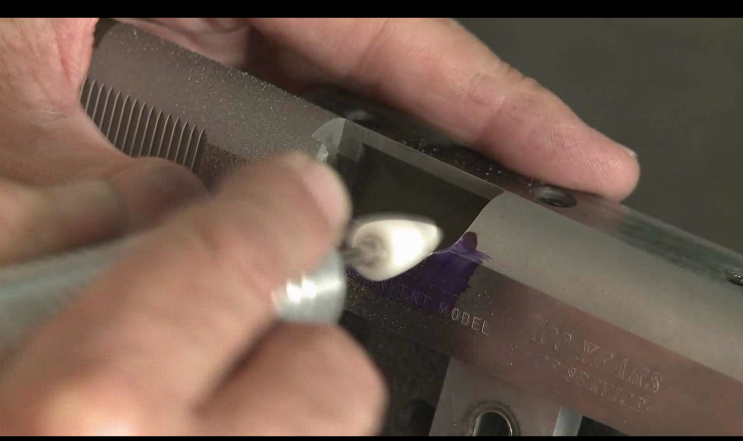 Any serious student of the 1911 knows the name Paul Liebenberg. He was innovating right there in the beginning, working as the manager for the Pachmayr Gun Shop in the 1980s. He founded the high end gunsmithing shop Pistol Dynamics, and also built high end customs in the renowned Smith & Wesson Performance Center. In his Panteao video series, Paul gives a ton of background on the 1911, custom modifications, and his approach to fitting barrels, installing safeties, reliability mods, and many other popular custom touches for the 1911. I watched this video and found it pretty informative and actually pretty entertaining. While the video won’t turn you into a 1911 gunsmith, it will give any 1911 fan some insight into what goes into building a high end, custom 1911 pistol.
Any serious student of the 1911 knows the name Paul Liebenberg. He was innovating right there in the beginning, working as the manager for the Pachmayr Gun Shop in the 1980s. He founded the high end gunsmithing shop Pistol Dynamics, and also built high end customs in the renowned Smith & Wesson Performance Center. In his Panteao video series, Paul gives a ton of background on the 1911, custom modifications, and his approach to fitting barrels, installing safeties, reliability mods, and many other popular custom touches for the 1911. I watched this video and found it pretty informative and actually pretty entertaining. While the video won’t turn you into a 1911 gunsmith, it will give any 1911 fan some insight into what goes into building a high end, custom 1911 pistol.
Here’s a preview:
SHOOTING STEEL, DRAWING BLOOD
If you shoot nonreactive (fixed) steel targets regularly where frangible ammunition is not required (it rarely is) or the steel has been shot a great deal (it usually has), you likely have been hit by ricocheting bullet or jacket fragments. My experience suggests one is usually hit from the shots of others, and to a much lesser extent from reactive steel. (Ricochets also occur in indoor ranges when shooting paper targets, due to walls, floors, and metal objects downrange, or backstop integrity issues). Ricochets can be large, sharp, and travel at sufficient velocity to pierce skin and draw blood, sometimes even through a layer of clothing. A bullet or jacket fragment can become embedded in an open wound at skin level or deeper, and can cause most types of wounds; laceration, incision, avulsion, or puncture. A puncture wound (also referred to as penetrating trauma) is the type most likely to do damage beneath the skin and require professional medical attention even though superficial bleeding is stopped. I have seen each of those type wounds, and one likely arterial and two venous bleeds caused by fragment ricochets. Continue reading
Bushnell Elite Tactical – ERS
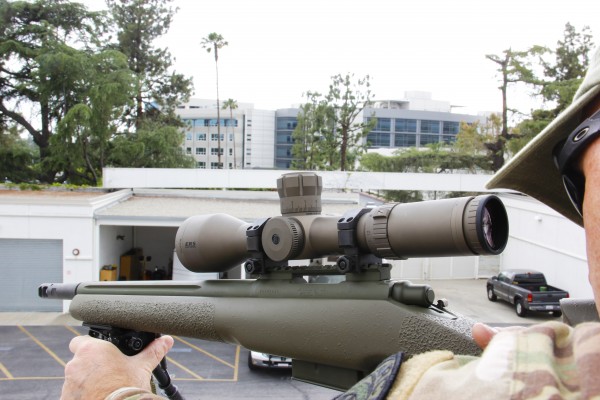 Riflescope, glass or precision optic; there are just as many terms for the tubular magnifiers that sit atop your prized weapons as there are manufacturers and options for these pricey items. Quite a few have come and gone throughout my locker over the years, but a handful have stayed based on use, repeatability, glass quality and overall ruggedness. The few hours I had at SHOT this year I was talking with Darryl Bolke about optics and he said I needed to see the new offerings from Bushnell. Evidently the look on my face made Darryl respond with, “Seriously, you need to believe me on this one.” Hearing that from a trusted friend, I followed and we met the Director of Military and Law Enforcement Sales, Tom Fuller. An hour later, with an exchange of business cards, I had arranged for two of their new production scopes to be sent my direction when they came off the line. Continue reading
Riflescope, glass or precision optic; there are just as many terms for the tubular magnifiers that sit atop your prized weapons as there are manufacturers and options for these pricey items. Quite a few have come and gone throughout my locker over the years, but a handful have stayed based on use, repeatability, glass quality and overall ruggedness. The few hours I had at SHOT this year I was talking with Darryl Bolke about optics and he said I needed to see the new offerings from Bushnell. Evidently the look on my face made Darryl respond with, “Seriously, you need to believe me on this one.” Hearing that from a trusted friend, I followed and we met the Director of Military and Law Enforcement Sales, Tom Fuller. An hour later, with an exchange of business cards, I had arranged for two of their new production scopes to be sent my direction when they came off the line. Continue reading
SHOT Show 2014 Highlights
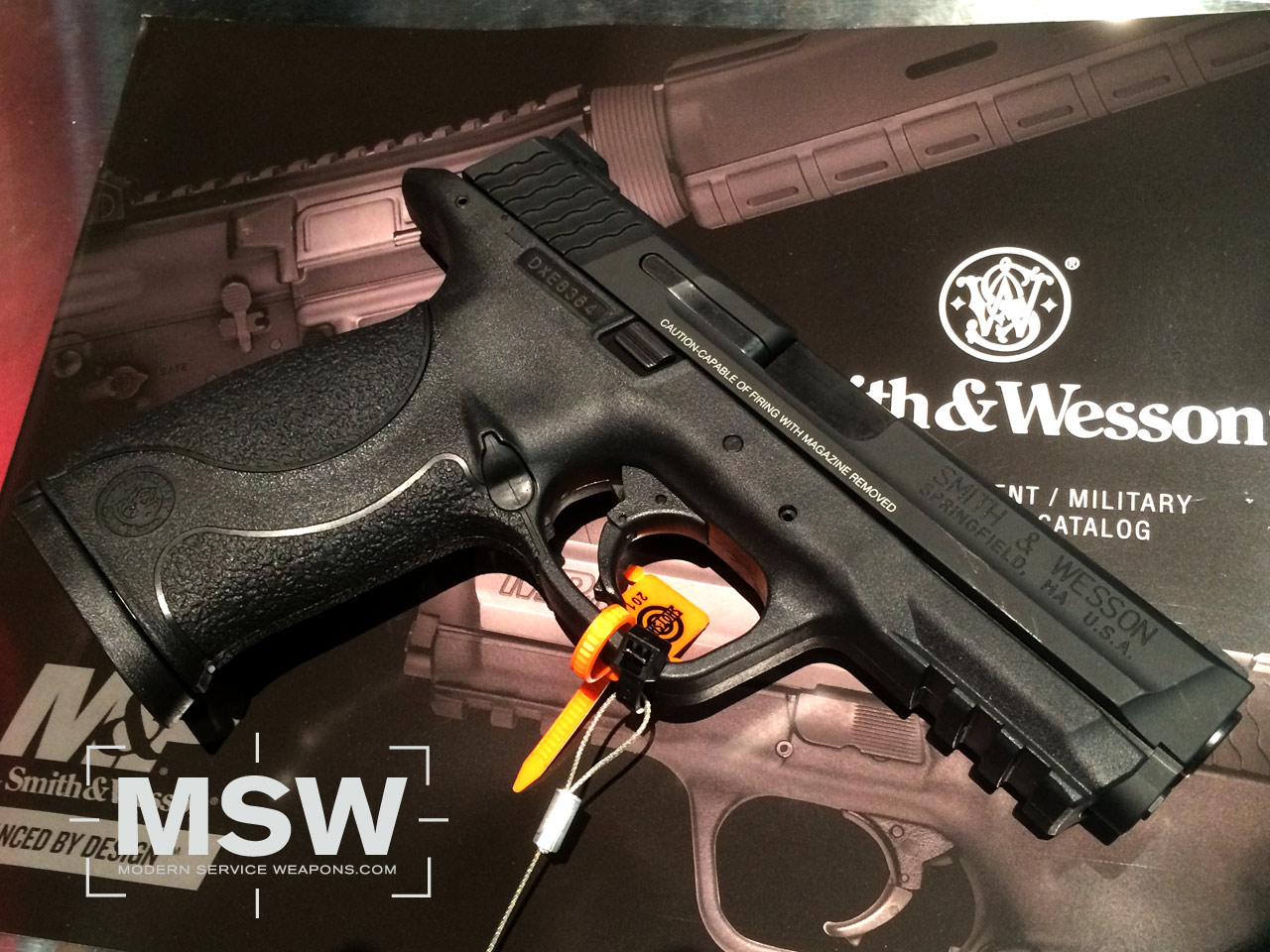 So we have another SHOT Show under our belt, and I thought I would share some of the products that we were most excited about. This is not intended to be a summary of all the notable introductions at the show, but rather the products that caught our attention at the show. Continue reading
So we have another SHOT Show under our belt, and I thought I would share some of the products that we were most excited about. This is not intended to be a summary of all the notable introductions at the show, but rather the products that caught our attention at the show. Continue reading
First Look- GrayGuns P-Series Internal Extractor
For many years, the internal extractors in later model SIG P-Series pistols have been somewhat problematic. The problems have been largely hit and miss, but were evident in some of the X5 pistols, as well as the P220 and others fielding the internal design. SIG eventually switched out to the short external extractor, and currently to a long external extractor.
My mentor, Bruce Gray at GrayGuns, INC has been working on the problem for several years and has finally come up with a “fix” for the reliability issues with the internal extractor guns. As can be observed in the video, the new extractor cleans up ejection and extraction, making it consistent and reliable. The process involves fitting the new extractor to the individual pistol and tuning it for reliability. The turn around time is about 10 days, and the cost for the modification is $200.
More information can be found at www.grayguns.com.
Another Look at the Glock 22
I am a self professed, self styled Glock hater. They are ugly. They have no soul.
About seven years ago, I had a very good opportunity at work. The down side was that it required me to give up the SIG P226 I was carrying, and forced me to a Glock.
I bought my first Glock 22 in around 1994, predating my entrance into law enforcement just a bit. All the other cool guys were carrying them, and it was the “wave” of the future. I shot it for a while, had some marksmanship problems with them, and quietly sold the G22 and went back to a P226. Now, in fairness, that was probably about the start of my wanderlust of pistols. I traded pistols at work every couple of years looking for the “One” that would make the bronze God of all things tactical. I drifted between calibers, and manufacturers every so often. As this offer came up at work, I made the switch to the G22, and eventually the G35. Continue reading
Rustick Knives
Happy to be back from overseas, I figured I really needed to catch up on some stuff I’ve been playing with. During deployment, my platoon decided to do a unit knife. Platoon knives have been something I have done in the past and have seen other units do that usually seem to go over well if there are no issues with the purchase. A little apprehensive on where to go, I was recommended Jack Stottlemire of Rustick Knives from a friend and decided to give him a call. Besides being a ex-marine (a gentle jab at Jack), Jack was awesome to do business with. Now for anyone looking to do a unit order, sometimes its just easier to make a executive decision. Just a gentle recommendation because getting twenty operators to make a decision on something is next to impossible. So after my best efforts of getting a agreement, and failing, I made a executive decision and placed an order.
Jack retired as a Sergeant Major in Special Operations after twenty six years in the US Army and Marine Corps. He is the man behind the knives and uses all his military experience in designing and producing his blades.
We decided (or I decided) on a smaller fixed blade with a small of the back kydex sheath. Counter to popular belief the vast majority of operators do not carry large bowie style cleavers hung upside down on their shoulder strap like something Arnold would do in the movie Commando. For me personally I find a small folder and a good multi-tool ideal for 99 percent of what I do at work. For those in the know, a small fixed blade comes in handy for jobs one might not think of using a knife for – like sifting through dirt or other substances looking for contraband, popping open locked cabinets, opening up loop holes from a hide site, or any other number of unforeseen tasks one might encounter. I find a 4” blade to be ideal with a fairly thick blade giving me a nice tough tip to use. That was exactly what we ended up with from Rustick. The G10 texture of the handle is perfect for work with gloves, he also offers more extreme handle textures I look forward to trying on future purchases. The knife is hefty and made for work with a subdued cerakote job on the blade to limit rust and shine. The feedback across the board form all my guys has been awesome with everyone in agreement we made the right choice for our order.
I urge any blade fans or someone just looking for a 100 percent US made hard use knife to go check out Rustick Knives. Jack is a one man shop with no website, so you have to look him up on Facebook. It is worth the effort and you don’t need an account to access his page and look at his work.




